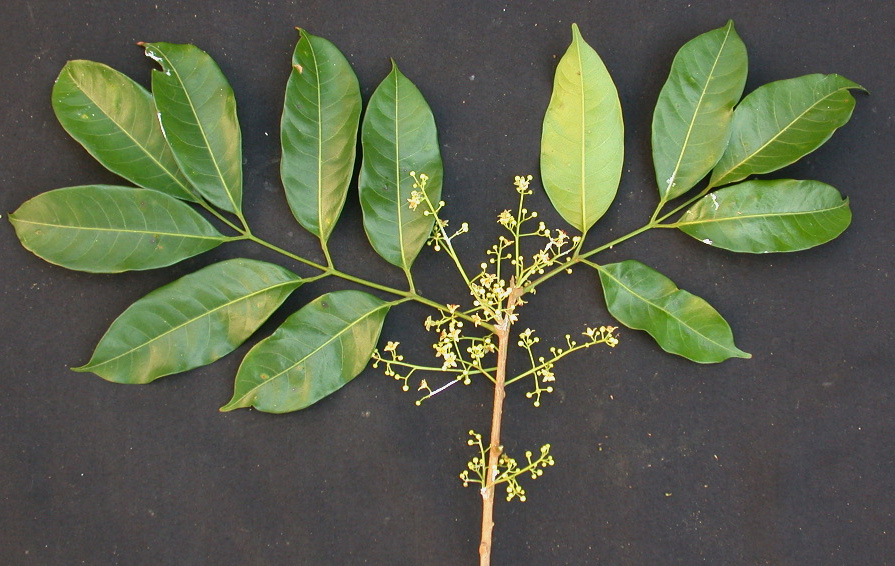Trinidad and Tobago
Incense Tree
Protium guianense

From https://earthpedia.earth.com
General Description / Cultural Significance
The Incense Tree, Protium guianense, is emblematic of Trinidad and Tobago, the southernmost islands in the Caribbean. The Trinidadian and Tobagan people have chosen this tree’s resin as a national symbol due to its aromatic qualities. The tree, a large evergreen with a girth often exceeding ten feet, produces a white resin upon harvesting the thick reddish-brown underbark. This resin, when dried and burned, emits an incense-like aroma. Similarly, crushed leaves release a distinct scent reminiscent of incense. Traditionally, the resin and aromatic wood are utilized in religious and indigenous ceremonies, and the resin is also employed as a remedy for asthma, and coughs, and as a mosquito repellent.
The cultural practices surrounding the Incense Tree reflect the diverse heritage of Trinidad and Tobago, influenced by indigenous, Afro-Caribbean, and South Asian communities. Notably, the Santa Rosa indigenous community’s recent installation of a new tribal Queen exemplifies the ongoing spiritual significance of incense. Historically, the smoke from burning incense mixed with tobacco was believed to facilitate communication with the spiritual realm and convey prayers to the Creator.
Climate Change / Conservation Status
Trinidad and Tobago face significant challenges due to climate change, including rising temperatures, coastal erosion, increased hurricane activity, and shifting sea levels. The preservation of evergreen rainforests, which help mitigate the impacts of heat, is critical. However, the rivers including the Santa Cruz are drying up, which poses additional difficulties. In response, the Trinidad and Tobago government has created the National Adaptation Plan implementing sustainable practices and reducing the country’s carbon footprint.
Although Protium guianense is not listed as a threatened species on the IUCN Red List, its conservation status is increasingly concerning. Habitat loss and overharvesting threaten its populations, and climate change poses additional risks, particularly due to the tree’s preference for low-lying areas vulnerable to saltwater intrusion. Effective conservation strategies, including habitat preservation and sustainable management, are essential to ensure the survival of this culturally and ecologically significant tree.
Alternate Names
Almecegueira – A name used in Brazil, especially in the Amazon region.
Copal – A general term used for various tree resins, sometimes applied to Protium species.
Dacryodes guianensis – An alternative scientific name used in some classifications.
Breu Branco – Refers to the white resin produced by the tree, used in traditional medicine and as incense.
Roucouyère – A name used in French Guiana.
Sources
Healy , D. (n.d.). Keeper of Traditions. Newsday Trinidad and Tobago. https://newsday.co.tt/2019/10/19/keeper-of-traditions/
News, C. B. (n.d.). The effects of climate change on Trinidad’s forests, rivers and seas. Global Voices. https://globalvoices.org/2023/10/11/the-effects-of-climate-change-on-trinidads-forests-rivers-and-seas/
Original Statement provided by the Embassy of the Republic of Trinidad and Tobago to the United Nations on the original World Sensorium Website.

